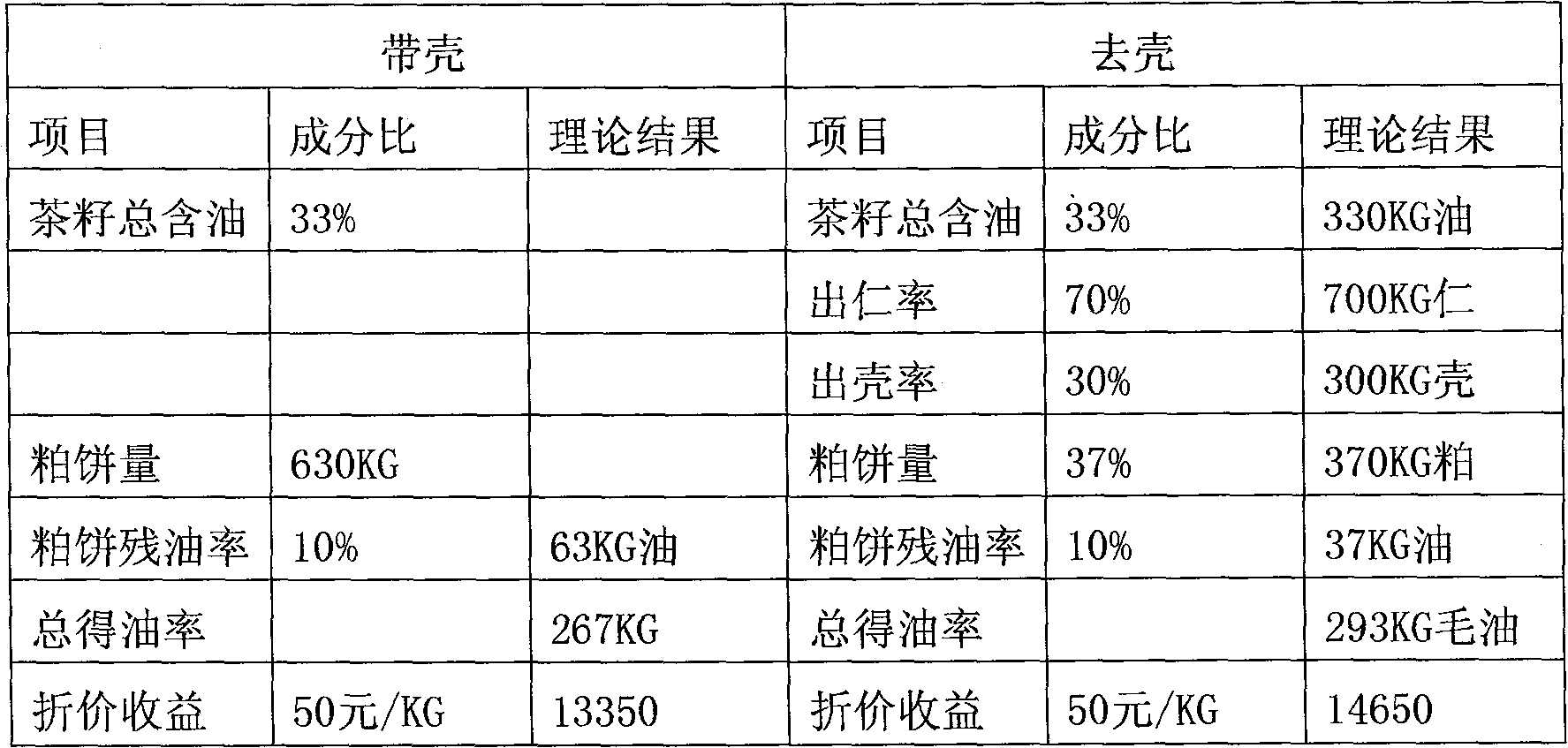Process for removing wax and extracting tea seed oil by ice crystal method
A technology of camellia seed oil and process method, which is applied in the directions of fat oil/fat production, fat oil/fat refining, and fat production, etc., can solve the problems of reduced oil yield, difficult feeding of the press, and oil is not easy to get out of the chamber, etc. The effect of improving oil quality, improving economic efficiency and improving oil yield
- Summary
- Abstract
- Description
- Claims
- Application Information
AI Technical Summary
Problems solved by technology
Method used
Image
Examples
Embodiment Construction
[0078] The first step: selection of camellia seed;
[0079] The second step: shearing and breaking;
[0080] The third step: winnowing and shelling, discarding the shell, and taking the tea seed kernel;
[0081] The fourth step: wet crushing;
[0082] The fifth step: steaming soft;
[0083] The sixth step: mixing, evenly mixing in the corn, 3% to 12% of the corn, preferably 5% of the corn;
[0084] The seventh step: oil pressing; choose screw oil press or hydraulic oil press;
[0085] Step 8: Condensation and stirring; control the oil temperature to 0°C, plus or minus 1°C;
[0086] The ninth step: centrifugal separation; select a tubular centrifuge;
[0087] The tenth step: molecular distillation;
[0088] The eleventh step: packaging.
PUM
 Login to View More
Login to View More Abstract
Description
Claims
Application Information
 Login to View More
Login to View More - R&D
- Intellectual Property
- Life Sciences
- Materials
- Tech Scout
- Unparalleled Data Quality
- Higher Quality Content
- 60% Fewer Hallucinations
Browse by: Latest US Patents, China's latest patents, Technical Efficacy Thesaurus, Application Domain, Technology Topic, Popular Technical Reports.
© 2025 PatSnap. All rights reserved.Legal|Privacy policy|Modern Slavery Act Transparency Statement|Sitemap|About US| Contact US: help@patsnap.com


